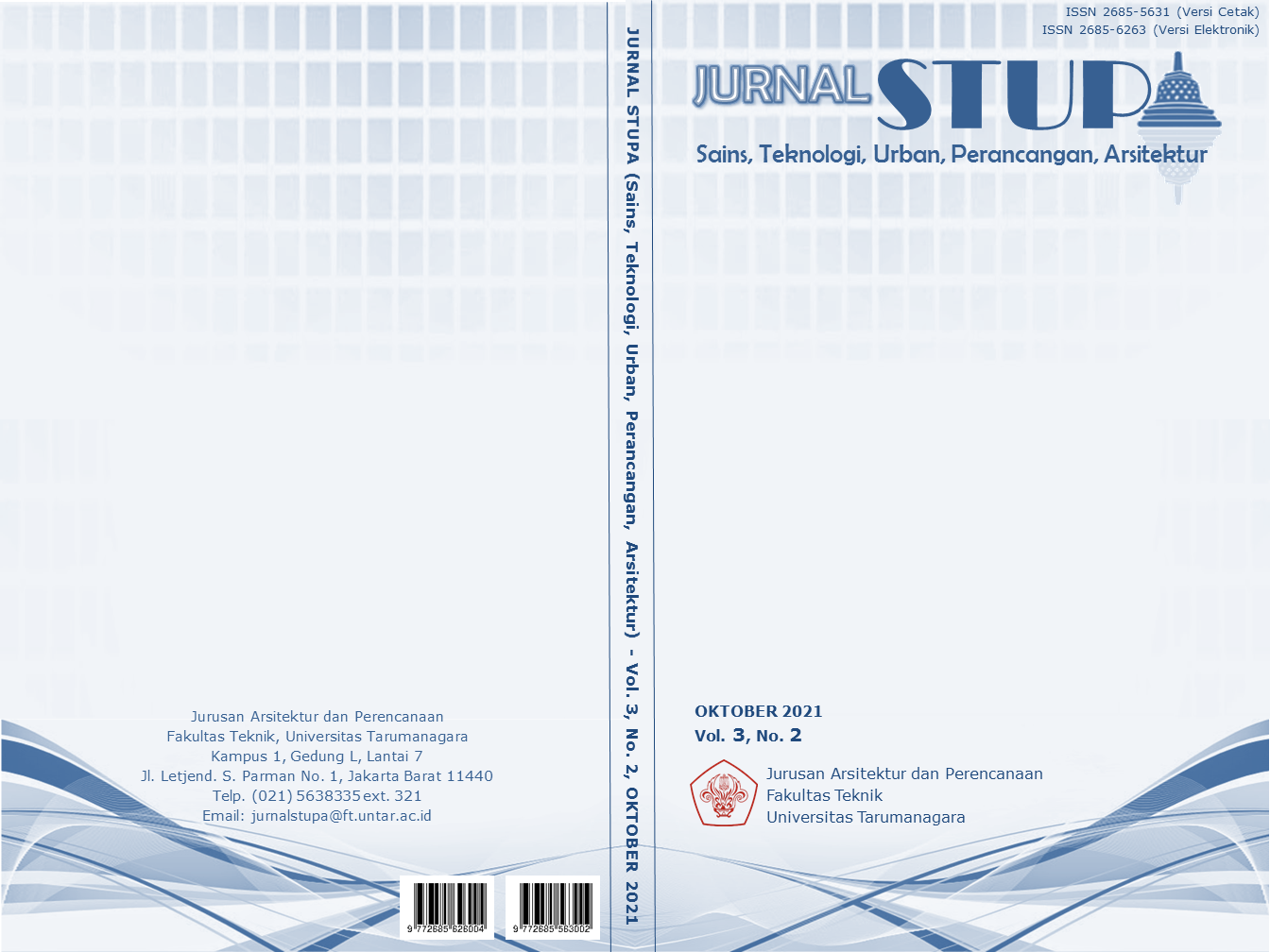IMPLEMENTASI PANGAN BERKELANJUTAN DI BALEKAMBANG MELALUI FASILITAS AQUAPONIC BERBASIS KOMUNITAS
Main Article Content
Abstract
Food is a primary need for humans. With energy produced by foods, humans can do daily activities that contribute to human society. Because of this, food plays a very pivotal role in human society, and the world itself. Unfortunately, in this era of globalization, food systems are commonly capitalized, which creates negative effects on earth’s ecosystem. Negative effects include overfarming, overuse of natural resources, and over-wasting. This has bad effects on earth and its ecologies, that’s why the application of sustainable foods in human society must be done. Sustainable food systems focus on producing food with a positive impact on the earth’s ecosystem and its consumers. Sustainable foods are well suited to be implemented in urban society, due to their large consumption value which largely impacts the rotation of food systems. The hope is that with the application of sustainable foods in urban communities, the need for healthy and positive-impacting food in urban communities could be fulfilled, while also keeping earth’s ecosystems intact. Balekambang community based aquaponics facility is a pilot project to provide sustainable and locally produced foods for urban residents in Jakarta, specifically in Balekambang sub-district. Using aquaponics system at its core, we combine planting and social activities to create a sustainable food ecosystem that belongs to the residents. The building itself is designed to provide optimal sunlight, airflow, and water distribution towards aquaculture and hydroponic plant systems, thus creating the year-round optimal environment for growing fish and plants.
Keywords: community; food; social; sustainability; urban
Abstrak
Pangan merupakan kebutuhan utama bagi manusia. Dengan energi dari pangan, manusia dapat melakukan aktivitas keseharian yang dapat berpengaruh terhadap kehidupan manusia. Dengan ini pangan sangat penting terhadap semua aspek kehidupan manusia, serta kondisi ekosistem bumi itu sendiri. Sayangnya, di era globalisasi ini, Sistem pangan sebagian besar dikapitalisasi. Banyak efek buruk yang diakibatkan kapitalisasi pangan ini. seperti contohnya overfarming, pemborosan SDA, dan penumpukan limbah. Hal ini berefek buruk terhadap ekosistem. Untuk itu aplikasi pangan berkelanjutan menjadi teramat penting. Pangan berkelanjutan berfokus pada bagaimana memproduksi pangan dengan cara yang positif terhadap ekologi bumi serta pengonsumsi pangan itu sendiri. Pangan berkelanjutan patut diterapkan di masyarakat perkotaan, karena volume konsumsi yang besar dan cukup berpengaruh terhadap rotasi pangan. Harapannya dengan aplikasi pangan berkelanjutan di masyarakat perkotaan, keperluan pangan sehat dan merata di masyarakat dapat dipenuhi, seiringan dengan dapat terjaganya kondisi ekosistem bumi. Fasilitas Aquaponic berbasis komunitas di Balekambang merupakan sebuah proyek eksperimental yang mengaplikasikan sistem pangan berkelanjutan di tengah komunitas pemukiman padat DKI Jakarta, spesifiknya Kelurahan Balekambang. Dengan mengkombinasikan sistem pangan Aquaponic dengan aktivitas sosial warga sekitar, proyek ini bertujuan agar sistem pangan berkelanjutan dapat diadopsi oleh warga balekambang dan menjadi sesuatu yang berasa dimiliki oleh warga sekitar, serta menghasilkan pangan sehat dan berkelanjutan bagi warga sekitar.
Article Details
References
Burgess, A., & Glasauer, P. (2004). Family Nutrition Guide. Rome: Food & Agriculture Organization.
Capra, F. (1996). The Web of Life : A New Scientific Understanding of Living Systems. New York: Anchor Books.
Cockrall-King, J. (2012). Food and The City : Urban Agriculture and the New Food Revolution. New York: Promotheus Books.
Coman, M., & Cioruta, B. (2019). From Human-Enviroment Interaction to Enviromental Informatics : the Social-Ecological Systems Dynamics in Knowledge-Based Society. Hidraulica, 12.
Devall, B. (1985). Deep Ecology : Living as if Nature Mattered. Salt Lake City: Gibbs M Smith Inc.
Food & Agriculture Organization. (2011). The Place for Urban and Peri-Urban Agricultures in National Food Security Programmes. Rome: Food & Agriculture Organization.
Gutierrez, R. U., & Hidalgo, L. d. (2020). Elements Of Sustainable Architecture. New York: Routeledge.
Holt-Gimenez, E. (2019). Capitalism, Food, and Social Movements : The Political Economy of Food System Transformation. Journal of Agriculture, Food Systems, and Community Development, 13.
Jena, A. K., Biswas, P., & Saha, H. (2017). Advanced Farming Systems In Agriculture : Strategies To Enhance The Production. Innovative Farming, 7.
Kalantari, F., Tahir, O. M., Lahijani, A. M., & Kalantari, S. (2017). A Review of Vertical Farming Technology : A Guide for Implementation of Building Integrated Agriculture in Cities. Advanced Engineering Forum, 16.
Neven, D. (2014). Developing Sustainable Food Chains - Guiding Principles. Rome: Food & Agriculture Organization.
Riawan, N. (2016). Step by Step Komplet Membuat Instalasi Akuaponik Portabel 1 m2 Hingga Memanen. Jakarta: AgroMedia Pustaka.
Sassi, P. (2006). Strategies for Sustainable Architecture. New York: Taylor & Francis.



